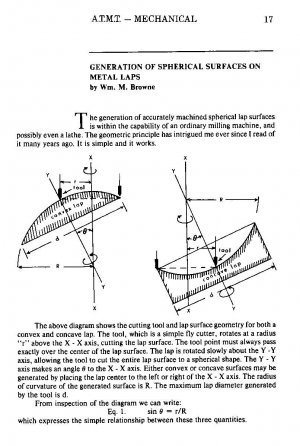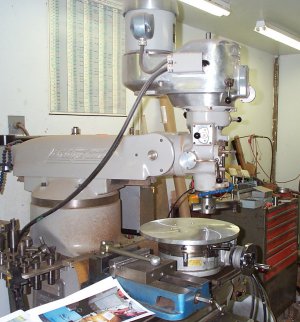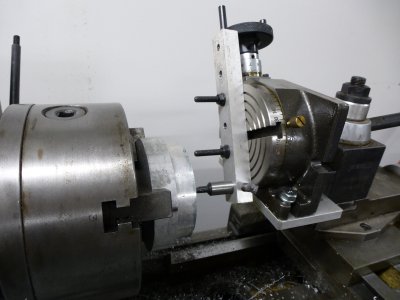Dan, may I hijack your thread for a moment? I know I shouldn't but you brought up such a valuable question about that very inexpensive little rotary table.
Here goes:
Dennis, would you show this lunkhead (me) what you're doing with the rotary table at that moment in the photo? I can get the horizontal position of making ball ends notion (I thought to myself once I figured it out, "Duh, that's too cool and easy!") but for the life of me I can't get the notion in my head what you are making with the lathe and table in that pic. Would you help me out?
The Picture below should show you the theory of making curves with a fly cutter on a milling machine.
Using a rotary table set at some small angle, one can use a fly cutter to make a convex or concave dish in the material on the turntable.
As the turntable is rotated, a spherical curve is formed.
The exact angle can be done with sin bars or just trial and error shimming or by setting the angle so that the desired saggita (depression) can be measured by the clearance of the fly cutter at the workpiece edge versus the center.

I have made numerous curved tools for mirror making using this method.

In this example, the turntable is tilted about 3 degrees and a 200 inch convex radius of curvature is being generated.
You can see the curve in the reflection on the aluminum platter.
The more tilt, the shorter the radius is.
If the turntable is positioned so that the center of the work is lower than the edge in relation to fly cutter, the curve will be concave.
In the previous lathe photo, the turntable is vertical and by setting it at an angle, a curve will be formed when a cutting bit sticking out on the turntable is rotated cutting a curved path through the face of the rotating work. You can also use a four jaw chuck to hold an offset (1/2 the diameter of the material) cutting bit * now basically a fly cutter) and cut a sphere into a piece of work attached to the rotating turntable.
The milling machine and fly cutter method is best, and the 17 inch aluminum platter (a pitch lap of a 24 inch telescope mirror) was generated in about 15 minutes.
It is by far the best way to make long radius spherical curves that I have found.
Hope this helps,
Dennis






